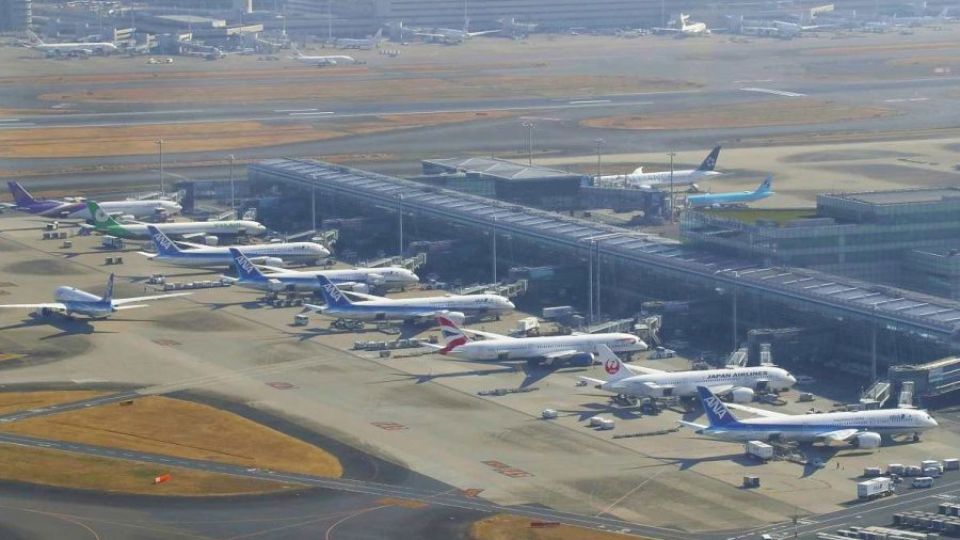November 19, 2024
SINGAPORE – The civil aviation agencies of Japan and Singapore are teaming up to improve runway safety after a fatal collision at Tokyo’s Haneda Airport in January.
The Civil Aviation Authority of Singapore (CAAS) and the Japan Civil Aviation Bureau (JCAB) said they are banding together to tap technology to prevent potential runway incursions.
They are also beefing up collaboration among parties that have an impact on runway safety, including airlines, airport operators, ground handlers and air navigation service providers, the two agencies said in a statement on Nov 18.
This came after CAAS director-general Han Kok Juan and JCAB senior deputy director-general Onuma Toshiyuki helmed the third Singapore-Japan dialogue on aviation collaboration in Kansai, Japan, on Nov 14 and 15.
Runway safety was thrust into the spotlight earlier in 2024 when an arriving Japan Airlines (JAL) passenger jet collided with a smaller Japan Coast Guard plane on the runway at Haneda Airport on Jan 2. The captain of the coast guard plane had mistakenly assumed he had permission to enter the runway.
The JAL Airbus A350 jet burst into flames upon landing and crashing into the other plane. All 379 passengers and crew aboard the jet escaped the blaze, while five people on the coast guard plane died.
“Following the Haneda incident, JCAB reached out to CAAS to study runway safety measures (that) CAAS implemented,” the Singapore authority told The Straits Times.
It said its runway safety action plans for Changi and Seletar airports ensure such safety in a “comprehensive and coordinated fashion” by working closely with airlines, airport operator Changi Airport Group and ground handlers.
“These action plans are continually reviewed to ensure that the risk mitigation strategies are effective and up to date, including taking reference from measures taken in other airports,” CAAS said.
From 2000 to 2023, at least 12 runway incursions happened at Changi and Seletar airports, according to air safety investigation reports by Singapore’s Transport Safety Investigation Bureau.
Besides runway safety, Singapore and Japan have agreed to expand air connectivity, and improve the punctuality and efficiency of flights between the two countries.
Air travel between Singapore and Japan has rebounded strongly over the last year.
As at November, the number of weekly passenger flights between the two countries – 165 services operated by seven airlines – was at 89 per cent of pre-Covid-19 levels. A year ago, this figure was 70 per cent.
Air travel between the two countries is expected to recover fully in 2025, the two agencies said.
CAAS and JCAB are also working together in a host of other areas, including sustainable aviation, air traffic management and aviation innovation.
For example, they agreed to encourage the use of an air traffic management concept called user-preferred routing in the region. This allows pilots to choose more direct routes to their destinations.
Not having to stick to predefined routes usually results in shorter flight times and reduced carbon emissions.
The concept is not new to Singapore, which is taking part in a trial on 38 flight routes operated by flag carriers Singapore Airlines (SIA), Garuda Indonesia, Qantas and Air New Zealand.
These routes include those from Singapore to Adelaide, Auckland, Brisbane, Cairns, Christchurch, Darwin, Melbourne and Perth, as well as from Sydney to Singapore.
CAAS and JCAB also agreed to work together to leverage technology to increase capacity and productivity in the aviation sector, so as to meet rising air travel demand. This saw Tokyo’s Narita Airport join the International Aviation Lab, which was set up in Singapore to tackle operational challenges confronting airports globally.
The lab counts the Singapore University of Technology and Design, CAAS, Changi Airport Group and SIA among its partners.
CAAS’ Mr Han said Singapore and Japan, as major Asia-Pacific air hubs, were committed to sharing their expertise to “position for growth and meet rising demand for air travel”.
Mr Toshiyuki of JCAB expressed his wish to continue cooperating with Singapore on the aviation front.
Editor’s note: An earlier version of this story stated that the Singapore and Japan civil aviation agencies are teaming up to roll out a plan to improve runway safety. CAAS has clarified that the runway safety action plan is Singapore’s, and Japan’s civil aviation agency had reached out to CAAS to study Singapore’s runway safety measures.

